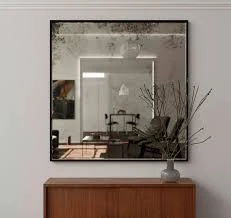

The Low-E Glass Factory Innovations in Energy-Efficient Glass Production
In recent years, the demand for energy-efficient construction materials has soared, largely due to increasing awareness of climate change and the need for sustainable living. One notable innovation in this sector is Low-E (Low Emissivity) glass, a type of energy-efficient glazing. The emergence of dedicated Low-E glass factories has played a critical role in the development and promotion of this cutting-edge technology, making buildings more energy-efficient and comfortable.
Low-E glass is designed to reflect heat while allowing ample natural light to pass through. The key to its functionality lies in the microscopically thin, transparent metallic coating applied to the glass. This coating reflects infrared radiation, which is responsible for heat, keeping interiors warm during the winter and cool in the summer. As a result, buildings utilizing Low-E glass can significantly reduce their heating and cooling costs, leading to not only economic benefits but also a smaller carbon footprint.
The Low-E Glass Factory Innovations in Energy-Efficient Glass Production
One of the significant advantages of Low-E glass is its ability to enhance comfort levels within living spaces. Traditional glass can create problematic temperature imbalances, leading to hot spots and cold drafts. Low-E glass addresses this issue by providing consistent indoor temperatures. This translates to a more comfortable living environment for occupants, which is particularly beneficial in regions with extreme weather conditions.

Moreover, Low-E glass contributes to a building's aesthetic appeal. Its clarity and light transmission properties allow for ample natural light to flood into spaces without compromising on thermal performance. As architects and designers continue to prioritize sustainable and visually appealing designs, Low-E glass offers an attractive solution. The ability to marry efficiency with elegance has made it a sought-after material in modern architecture.
In addition to energy savings and enhanced comfort, Low-E glass can also be engineered to reduce glare and UV radiation. This is particularly important in spaces where preserving interior finishes and furnishings is a priority. The factory can customize Low-E glass to meet specific needs, ensuring that it not only protects the building’s aesthetics but also improves its overall longevity.
The rise of Low-E glass factories reflects a broader shift towards sustainable building practices. By providing a material that reduces energy consumption and enhances building performance, these factories are helping to pave the way for greener future. The glass produced in these facilities is often a key component in achieving LEED (Leadership in Energy and Environmental Design) certification, which recognizes buildings that have met stringent environmental and energy efficiency standards.
Furthermore, the establishment of Low-E glass factories has contributed to job creation within the green technology sector. Skilled labor is essential for the manufacturing process, from glass fabrication to quality control. As the demand for energy-efficient products grows, so too does the need for a workforce equipped with the necessary skills to meet this demand.
In conclusion, the Low-E glass factory stands as a beacon of innovation in the realm of sustainable construction materials. Through advanced manufacturing techniques and a focus on energy efficiency, these factories are transforming the way buildings are constructed and utilized. With benefits that include cost savings, enhanced comfort, and environmental sustainability, Low-E glass is set to play a pivotal role in our future urban landscapes. As society continues to prioritize sustainability, the Low-E glass factory is well-poised to meet the growing demand for energy-efficient solutions.